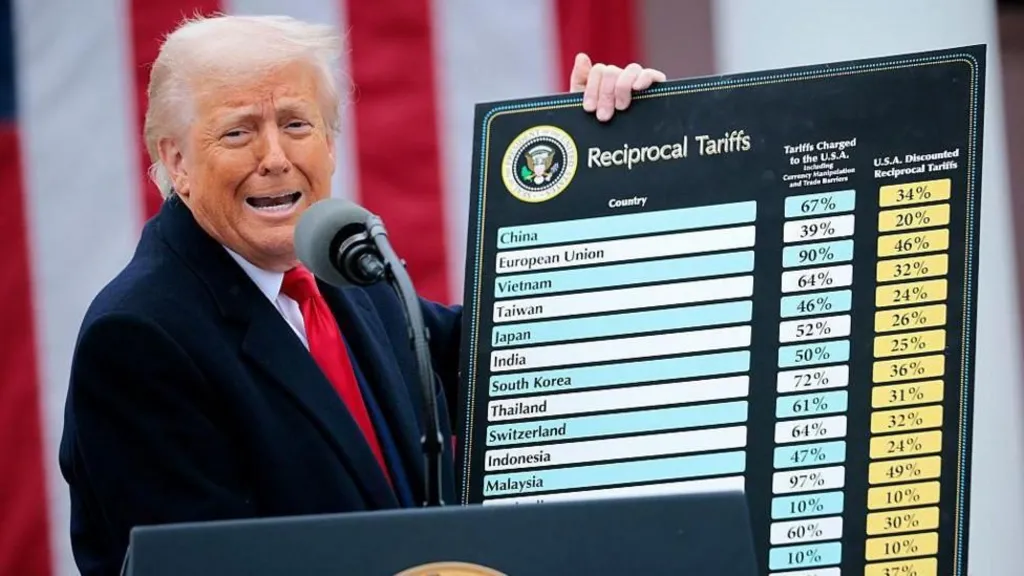The European Union’s trade chief has emphasized the need for “respect” in trade dealings with the United States. This statement comes after President Donald Trump threatened significant tariffs. Trump indicated a potential 50% tariff on all goods imported from the EU. The EU maintains its commitment to a mutually beneficial trade agreement.
EU’s Stance on Trade Negotiations
Maros Sefcovic, the EU Trade Commissioner, spoke after a call with US Trade Representative Jamieson Greer and Commerce Secretary Howard Lutnick. He affirmed the EU’s full engagement. The bloc is committed to securing a deal that works for both sides. Sefcovic stressed that EU-US trade is unparalleled. He stated it “must be guided by mutual respect, not threats.” He also warned that the EU stands ready to defend its interests.
Trump’s Impatience and Tariff Ultimatum
Earlier on Friday, Trump expressed dissatisfaction. He noted the slow pace of ongoing EU-US trade negotiations. He reiterated his plan to raise tariffs on June 1st. This date, he said, was set. Writing on social media, Trump declared discussions with the EU were “going nowhere.” He clarified that tariffs would not apply to products built or manufactured in the US.
Later, he told reporters, “I’m not looking for a deal – we’ve set the deal.” However, he immediately added that a large European investment in the US might prompt a delay.
The Scale of EU-US Trade
The European Union is one of Washington’s largest trading partners. US government figures show that the EU sent over $600 billion (€528 billion; £443 billion) in goods to the US last year. In return, the US sold $370 billion worth of goods to the EU. This significant trade volume highlights the potential economic impact of tariffs.
European Reactions to Tariff Threats
European governments quickly reacted to Trump’s threats. They warned that higher tariffs would harm both sides economically.
Warnings from European Leaders
Ireland’s Taoiseach (Prime Minister) Micheál Martin stated, “We do not need to go down this road.” He emphasized that “negotiations are the best and only sustainable way forward.” France’s Trade Minister Laurent Saint-Martin echoed a similar sentiment. He said, “We are maintaining the same line: de-escalation, but we are ready to respond.”
German Economy Minister Katherina Reiche urged the bloc to “do everything” to find a solution with the US. Dutch Prime Minister Dick Schoof backed the EU’s strategy. He reminded reporters, “we have seen before that tariffs can go up and down in talks with the US.”
Potential Negotiation Strategies and Broader Aims
The EU is currently negotiating with the US as a unified bloc. However, alternative approaches have been suggested.
Individual Country Negotiations
Stephen Moore, a former economic advisor to Trump, shared his perspective with the BBC. Moore, who works for the conservative think tank The Heritage Foundation, suggested a different path. He commented, “What may happen in Europe… is that we may try to negotiate individually with countries in Europe.” This approach would bypass the EU’s collective negotiation power.
Decoupling from Chinese Influence
Moore also offered insight into Trump’s “ultimate aim.” In his opinion, Trump’s real goal is “to decouple not just the US but the whole world from Chinese influence.” Moore believes this would be a beneficial outcome if achieved. This suggests a broader strategic motivation behind the tariff threats.
Previous Tariff Actions and Trade Deficit Concerns
Trump has a history of imposing tariffs, citing trade imbalances.
Past Tariff Announcements and Pauses
In early April, Trump announced tariffs against numerous countries. This included a 20% tax on most EU goods sold into the US. Shortly after, the president paused these higher tariffs for three months, until July 8th. This pause aimed to allow for more negotiations. However, a 10% baseline tax remained in place against US trade partners. Higher US tariffs against China also remained, although they were substantially lowered compared to initial proposals.
Despite some tariff reductions, a 25% tariff on EU steel and aluminum imports remained in place. The EU, in response, has also threatened its own countermeasures. They previously announced a potential 25% tariff on $20 billion (€18 billion; £15 billion) worth of US goods. This measure has been put on hold. The EU is also currently considering additional measures on US imports valued at €95 billion.
Focus on Uneven Trade Relationships
Trump’s complaints about Europe have largely centered on what he perceives as an uneven trade relationship. The EU currently sells more goods to the US than it purchases from America. Trump attributes this trade deficit to policies he claims are unfair to American companies. He has specifically raised concerns about policies related to cars and agricultural products, which are key sectors in transatlantic trade.
Market Reaction and Broader Implications
The latest tariff threats had an immediate impact on financial markets.
Stock Market Decline
Shares in both the US and EU fell on Friday following Trump’s statements. America’s S&P 500 index dropped by about 0.7%. Germany’s Dax and France’s Cac 40 indices ended the day down more than 1.5%. This market reaction underscores the financial community’s concern over potential trade disruptions and uncertainty.
Implications for Tech Giants
Trump also specifically warned Apple. He threatened to impose “at least” a 25% import tax on iPhones not manufactured in America. He later expanded this threat to include any smartphone. This could significantly impact global supply chains for technology companies. It highlights the potential for widespread disruption across various industries.








